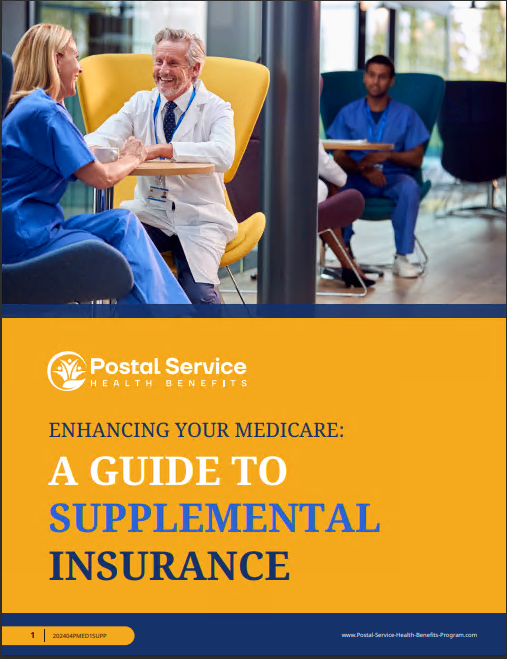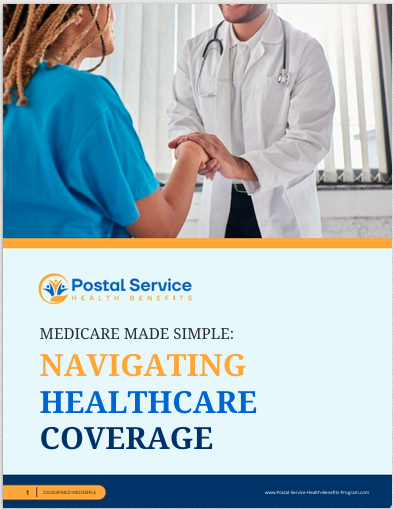Key Takeaways:
-
Understanding Medicare benefits and their integration with Postal Service Health Benefits (PSHB) ensures you make informed decisions about your health coverage.
-
Aligning your PSHB plan with Medicare can provide cost savings and expanded benefits, particularly for retirees and their families.
How Medicare and PSHB Work Together
If you’re enrolled in the Postal Service Health Benefits (PSHB) program, you may wonder how Medicare fits into your overall health coverage. PSHB and Medicare can complement each other, providing broader coverage and reducing your out-of-pocket costs. Understanding how these programs interact is vital for making the most of your healthcare benefits.
Medicare Basics
Medicare is a federal program offering healthcare coverage primarily to people aged 65 or older, as well as some younger individuals with disabilities. It consists of several parts:
-
Part A (Hospital Insurance): Covers inpatient hospital stays, skilled nursing care, and some home healthcare services.
-
Part B (Medical Insurance): Covers outpatient services like doctor visits, lab tests, and preventive care.
-
Part D (Prescription Drug Coverage): Provides coverage for medications.
-
Part C (Medicare Advantage): Offers an alternative to Original Medicare through private plans, often including additional benefits.
What Makes PSHB Different?
The PSHB program is specifically designed for Postal Service employees, retirees, and their families. As of 2025, it replaces FEHB (Federal Employees Health Benefits) for this group. PSHB plans include comprehensive benefits, ranging from medical and hospital services to prescription drugs and preventive care.
One significant aspect of PSHB is its integration with Medicare for retirees and their eligible family members. If you’re eligible for both PSHB and Medicare, combining the two can enhance your healthcare coverage.
Key Benefits of Pairing PSHB with Medicare
Lower Out-of-Pocket Costs
When you’re enrolled in both Medicare and PSHB, your costs for deductibles, copayments, and coinsurance are often reduced. PSHB plans are designed to work with Medicare, which means they may waive or lower these expenses for Medicare-covered services.
Prescription Drug Coverage
PSHB plans automatically include prescription drug benefits that align with Medicare Part D. This coordination ensures you receive the same benefits as a standalone Part D plan, often with added advantages like lower costs and more comprehensive coverage.
Expanded Provider Networks
Medicare’s broad provider network combined with the providers in your PSHB plan means you have access to an extensive range of healthcare professionals and facilities. This is especially valuable if you need specialized care.
Financial Protection
Medicare and PSHB together can help protect you from high medical costs. PSHB’s out-of-pocket maximums and Medicare’s cost-sharing structure ensure you’re not left with unaffordable bills for major health events.
Enrollment Requirements and Timelines
Initial Enrollment for Medicare
If you’re turning 65, you have a 7-month Initial Enrollment Period (IEP) to sign up for Medicare. This period includes the three months before, the month of, and the three months after your 65th birthday. Enrolling during this time helps avoid late enrollment penalties.
Coordination with PSHB
As a Postal Service annuitant, you must enroll in Medicare Part B to maintain your PSHB coverage unless you qualify for an exemption. This requirement applies to retirees and their eligible family members who become Medicare-eligible after January 1, 2025.
Open Season Changes
During Open Season, which typically runs from mid-November to mid-December, you can review and make changes to your PSHB plan. This is a crucial time to ensure your plan aligns with your Medicare benefits and healthcare needs.
Key Considerations When Combining Medicare and PSHB
Analyze Costs
While Medicare Part A is usually premium-free, Part B requires a monthly premium. Balancing these costs with your PSHB premiums and potential out-of-pocket savings is essential. Remember, PSHB plans often reduce or eliminate costs like deductibles when paired with Medicare.
Understand Coordination of Benefits
Medicare is typically the primary payer for eligible services, meaning it pays first. Your PSHB plan acts as the secondary payer, covering any remaining costs within its benefits structure. This coordination minimizes your financial burden.
Review Plan Options
PSHB plans vary in their benefits and cost-sharing structures. Some plans offer additional incentives for Medicare enrollees, such as premium reimbursements or enhanced benefits. Reviewing these options can help you choose the best plan for your situation.
Special Benefits for Retirees
Retirees enrolled in both PSHB and Medicare often enjoy unique benefits, including:
-
Premium Reimbursements: Some PSHB plans partially reimburse your Medicare Part B premiums.
-
Lower Prescription Costs: Prescription drug coverage through PSHB may waive certain costs for Medicare enrollees.
-
Access to Enhanced Benefits: Additional benefits like vision and hearing care may be available, offering comprehensive coverage for retirees.
Navigating Common Challenges
Managing Multiple Plans
Balancing Medicare and PSHB benefits can seem complex, but understanding how they work together simplifies the process. Ensure you’re familiar with the benefits of each plan and how they coordinate to avoid overlapping costs or gaps in coverage.
Staying Informed
Healthcare policies and costs can change annually. Reviewing your Annual Notice of Change (ANOC) from PSHB and Medicare ensures you’re up to date on coverage changes, premium adjustments, and cost-sharing updates.
Avoiding Penalties
Delaying Medicare enrollment can result in lifetime penalties. For example, failing to sign up for Part B when required can lead to higher premiums. Be proactive about enrollment to avoid unnecessary costs.
Maximizing Your Health Coverage
Utilize Preventive Services
Medicare and PSHB both emphasize preventive care. Take advantage of annual wellness visits, screenings, and immunizations to maintain your health and catch potential issues early.
Compare Plan Costs and Benefits
Each year, compare your PSHB plan with other options available during Open Season. Consider how the plan integrates with Medicare and whether it meets your evolving healthcare needs.
Plan Ahead for Retirement
If you’re nearing retirement, understanding how PSHB and Medicare work together is critical. Planning ahead ensures a smooth transition and uninterrupted coverage for you and your family.
Wrapping Up Your Health Coverage Decisions
Navigating Medicare and PSHB may feel daunting, but understanding how these programs complement each other puts you in control of your health coverage. By aligning your plans, you can reduce costs, expand your benefits, and gain peace of mind. Take the time to review your options and make informed decisions that support your healthcare needs now and in the future.







